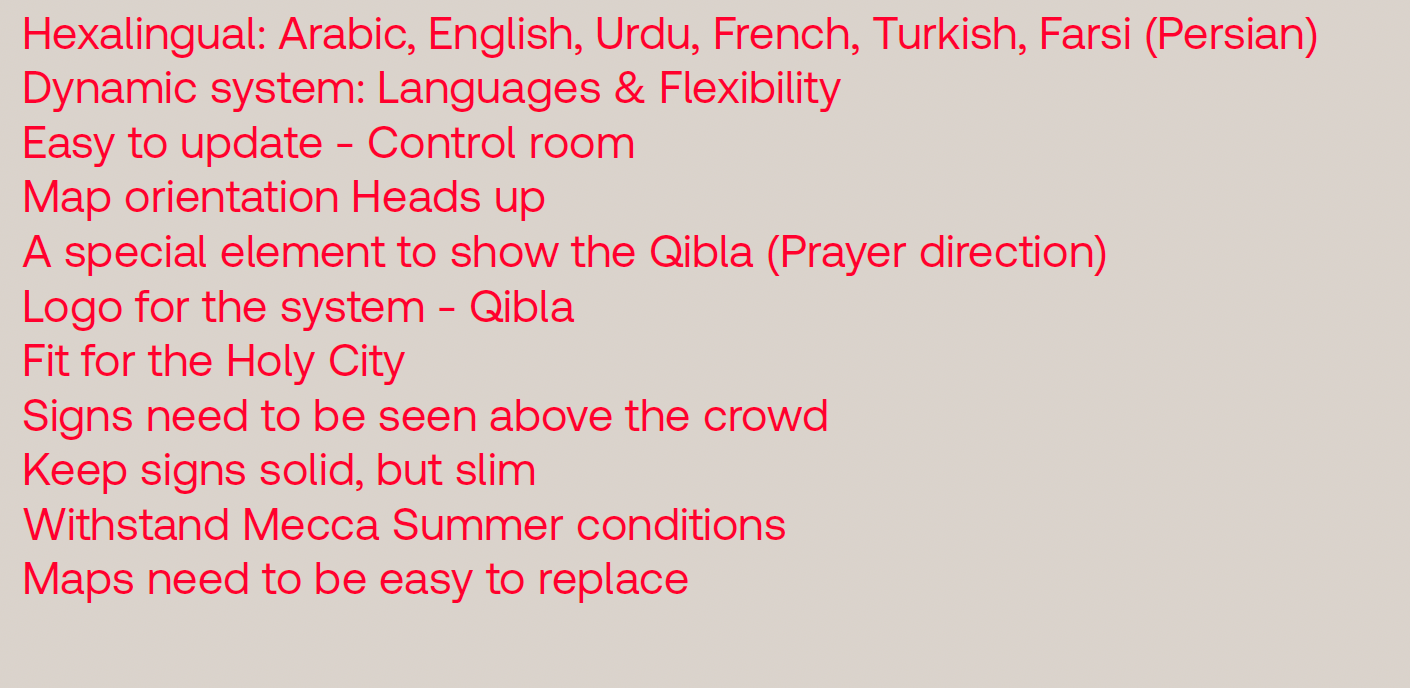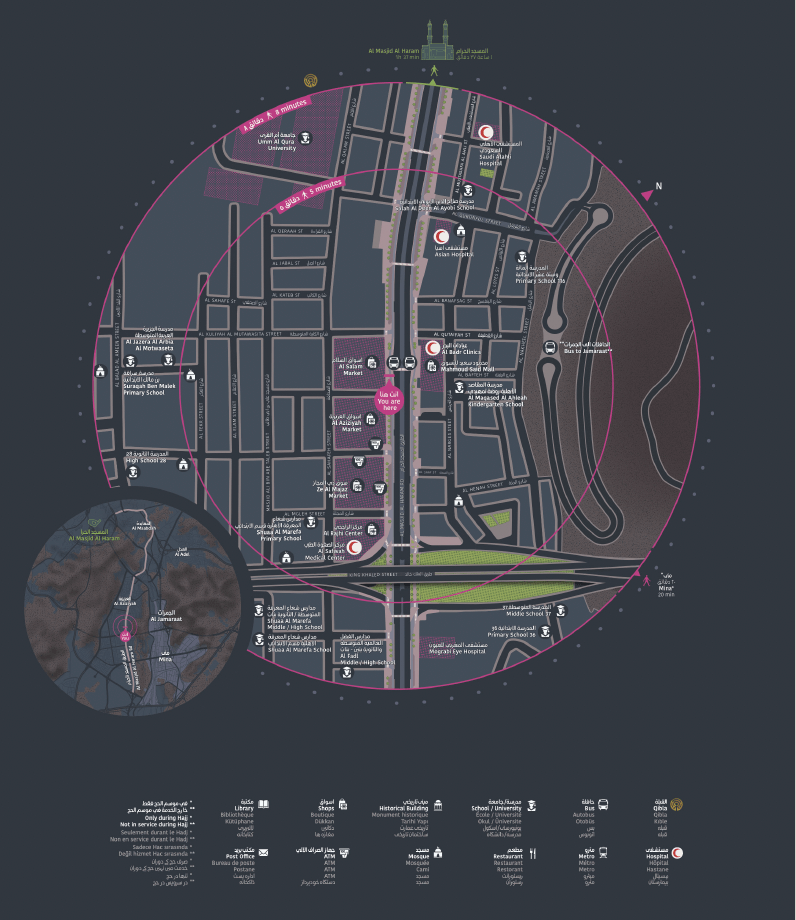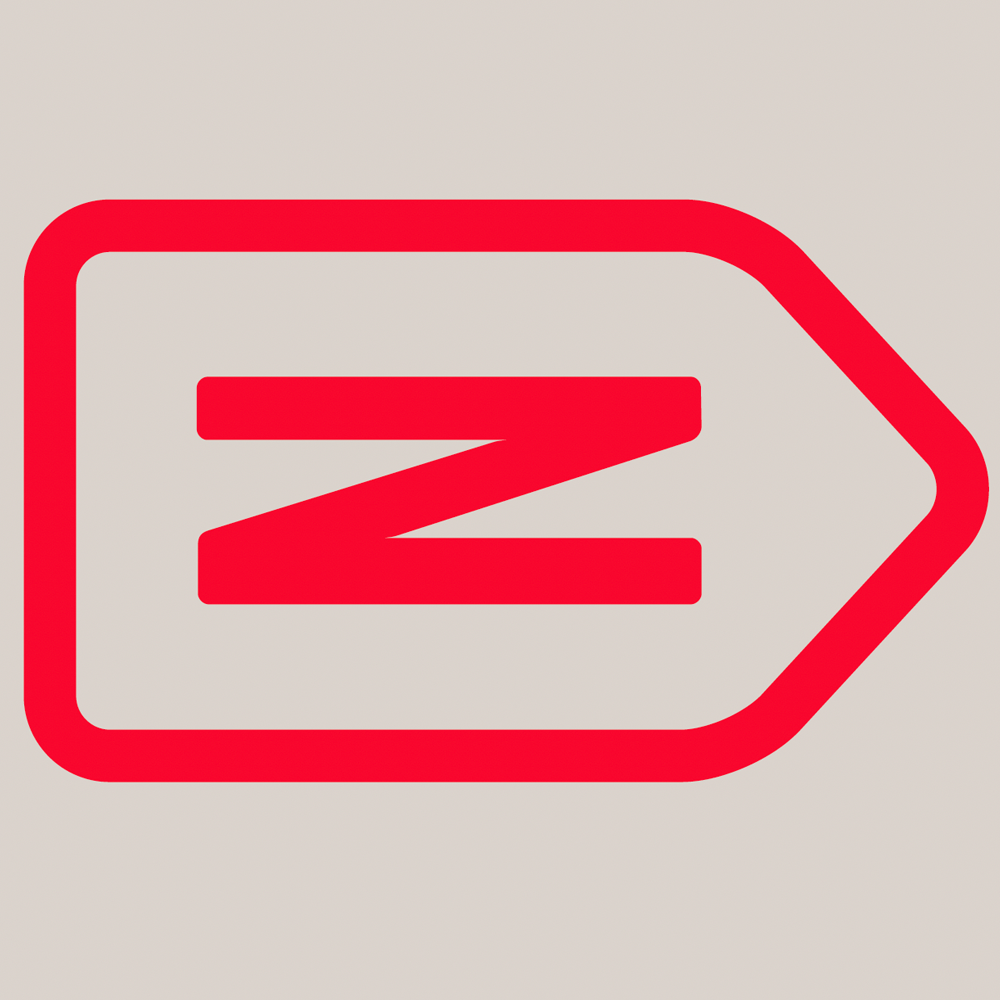
Kicking off the Spring term, the Baseline shift team welcomed Joan Zalacain to discuss his career in wayfinding and pictogram design. Since graduating from our MA programme, Joan has focussed on growth in this area through his firm, Zalacain Wayfinding.
‘Way–finding’ the way

Joan is committed to bringing ‘clarity to an era of information obesity’. He believes effectiveness and beauty work together as one to provide clear maps and signs. In Joan’s view, it is under-appreciated how much planning and study goes into developing wayfinding systems.
The project in Mecca involved creating a wayfinding system including maps and pictograms to help people navigate the town. The challenges involved were often technical or theoretical, but also related to adapting to new environments and cultures. An example provided was how meetings had to be planned and arranged around prayers, an essential component of life for Muslims.
Working in the field of graphic communication can take designers all around the world, requiring new languages and cultures to be learned, on top of developing one’s technical skill and creativity. In this case, the project was multilingual – The digital map even had to include 6 languages (a challenge met by alternating between languages in a loop). As well as some fluency in those languages, the job also needed a strong understanding of how typography is presented in all the scripts used. Latin and Arabic Typography have very different conventions and rules. There were also differences in how pictograms are understood by people from different places or backgrounds. For example, in Western culture owls are seen as wise creatures, whilst in India they are represented as fools – so messages presented visually can be easily misread.
The final challenge was that even though the wayfinding system was for a single 11km street, there was no single user journey or predictable start and end point. People would use streets to go to Haram, go to the barbers or go shopping. The finished system had to embrace this kind of flexibility.



Conclusion
“So it was a very complex yet an interesting, crazy project!”–Joan
Joan’s talk expanded the design horizons of the undergraduates present. It was great to get a glimpse of a career where you can travel to new places and be faced with new challenges every day, not only helping others but also broadening your understanding of race, religion and geography. It proves we don’t have to be limited by our first language or knowledge. We should be ambitious and eager to learn surprising new skills as we embark on our own design journeys.

